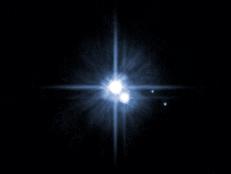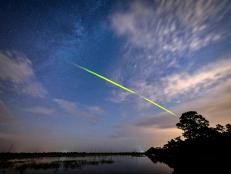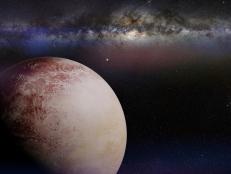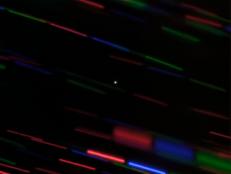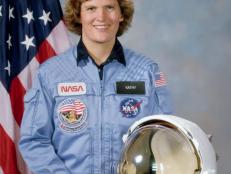All Space Articles
Showing 211 - 225 of 491 results
The Nobel Prize Fell Into a Black Hole (and That’s a Good Thing)
The 2020 Nobel Prize in Physics is being awarded to scientists to have dedicated their careers to the study of black holes.
DNA's Building Blocks May Have Their Origins in Outer Space
One of life's building blocks could have originated in outer space. But if this experiment shows how these building blocks actually formed, how exactly did they get to Earth?
Lowell Observatory Astronomers Celebrate Hubble
Astronomers from Lowell Observatory in Flagstaff, Arizona celebrate the 30th Anniversary of the Hubble Space Telescope with personal stories from their research.
May Sky Watch: What to Look Out For This Month
Whether you can see it from home or stream it online, here are some of May's wonderous celestial events.
It's Time for a 2021 Space Flight Round-up
Space is a busy place, with a lot of things going up (most of the time) and coming down (when we want them to). Let’s check in on the latest orbital happenings.
Why We'll (Probably) Never Be Able to Teleport
For many of us, teleportation would be the absolute best way to travel. Imagine just stepping into a transporter and being able to go thousands of miles in nearly an instant.
Why Does Pluto Have Such a Weird Orbit?
Pluto is the black sheep of the planets in our solar system and it looks like astronomers aren’t sure how long Pluto will remain in its present orbit.
Lowell Scientists Reveal Second Known Minimoon
Through use of the Lowell Discovery Telescope, astronomers have gathered data proving that a second known minimoon of Earth exists. Let's learn more about this newly discovered asteroid!
See Comet NEOWISE Before it Disappears
Discovered in late March, Comet NEOWISE has shown itself in the skies all over the world. Dr. David Schleicher, Senior Astronomer at Lowell Observatory gives us some details about this cool comet gracing the night skies.
How Did the Solar System Form?
How did our solar system form? It's a pretty simple and straightforward question, but as with most things in science, simple and straightforward doesn't necessarily mean easy.
Is Interstellar Travel Really Possible?
Listen folks, I love a good sci-fi movie as much as anyone. Cruising around the galaxy, finding weird stuff, and blowing up aliens--it’s all good. But just because a writer can come up with something, it doesn’t make it possible. I’m sorry to say that we’re going to be bound to our solar system for a really, really long time. As in, probably forever.
Female Firsts: Meet Dr. Kathy Sullivan
In honor of Women's History Month, we're celebrating the achievements of women around the globe and throughout history. From the pages of The Explorers Journal, we're sharing stories from four women who broke boundaries in exploration, research, and science. In our final spotlight, meet the first American woman to walk in space and to reach the deepest known point in the ocean, Dr. Kathy Sullivan.
25 Years In the Making, the James Webb Telescope Is Coming to Science Channel
The world’s most powerful observatory - the James Webb Space Telescope – is set for launch later this month after more than 25 years of development and construction. Science Channel, the leader of all things space, will take viewers inside this incredible feat of technology and its launch with two specials airing Tuesday, December 21 at 10 PM ET/PT with a Post-Launch Special to air Sunday, December 26 at 10 PM ET/PT.
The Night Sky is Part of Our Natural Environment
Most people in the United States have lost access to the night sky. This may not be a surprise to you if you’re living in a major metropolitan area. Perhaps you can pick out some of the brightest stars or a few planets on a clear night, but that’s it. Participate in International Dark Sky Week, April 22–30; their mission is to reduce light pollution and bring better lighting to communities around the world so that all life can thrive.
Six Planets are Retrograde, What Does that Mean for You?
Spoiler alert: It's an optical illusion.











